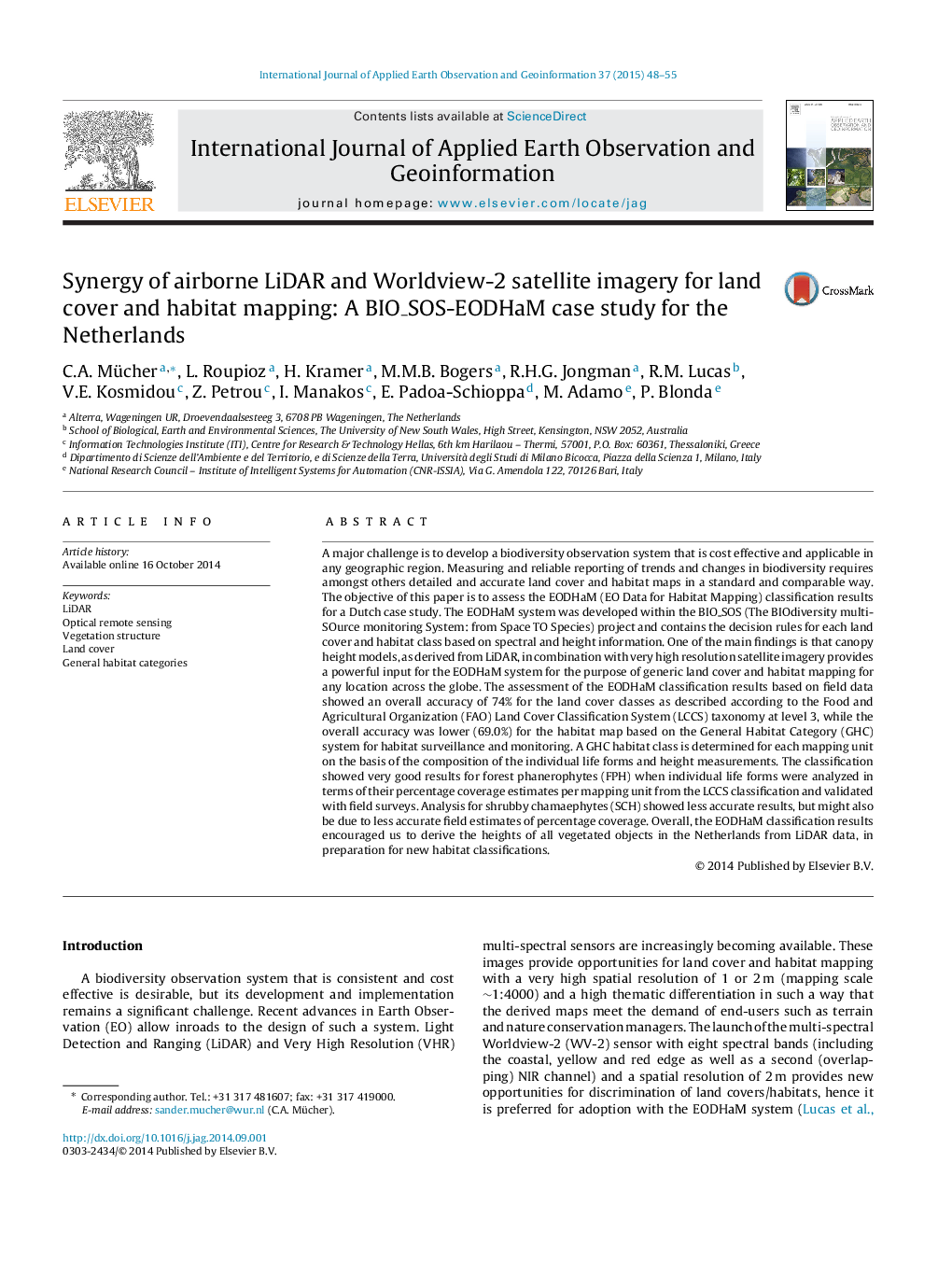| کد مقاله | کد نشریه | سال انتشار | مقاله انگلیسی | نسخه تمام متن |
|---|---|---|---|---|
| 6348777 | 1621821 | 2015 | 8 صفحه PDF | دانلود رایگان |

- Integration of LiDAR data and Worldview-2 imagery for detailed habitat mapping.
- Canopy height models (CHM) improve the quality of BIOSOS' EODHaM system results.
- Validation showed an overall accuracy of 69.0% for the habitat classification.
- Regression analysis showed an R square 0.96 for forest phanerophytes.
- Our study has provoked the processing of CHMs for the entire country.
A major challenge is to develop a biodiversity observation system that is cost effective and applicable in any geographic region. Measuring and reliable reporting of trends and changes in biodiversity requires amongst others detailed and accurate land cover and habitat maps in a standard and comparable way. The objective of this paper is to assess the EODHaM (EO Data for Habitat Mapping) classification results for a Dutch case study. The EODHaM system was developed within the BIO_SOS (The BIOdiversity multi-SOurce monitoring System: from Space TO Species) project and contains the decision rules for each land cover and habitat class based on spectral and height information. One of the main findings is that canopy height models, as derived from LiDAR, in combination with very high resolution satellite imagery provides a powerful input for the EODHaM system for the purpose of generic land cover and habitat mapping for any location across the globe. The assessment of the EODHaM classification results based on field data showed an overall accuracy of 74% for the land cover classes as described according to the Food and Agricultural Organization (FAO) Land Cover Classification System (LCCS) taxonomy at level 3, while the overall accuracy was lower (69.0%) for the habitat map based on the General Habitat Category (GHC) system for habitat surveillance and monitoring. A GHC habitat class is determined for each mapping unit on the basis of the composition of the individual life forms and height measurements. The classification showed very good results for forest phanerophytes (FPH) when individual life forms were analyzed in terms of their percentage coverage estimates per mapping unit from the LCCS classification and validated with field surveys. Analysis for shrubby chamaephytes (SCH) showed less accurate results, but might also be due to less accurate field estimates of percentage coverage. Overall, the EODHaM classification results encouraged us to derive the heights of all vegetated objects in the Netherlands from LiDAR data, in preparation for new habitat classifications.
Journal: International Journal of Applied Earth Observation and Geoinformation - Volume 37, May 2015, Pages 48-55